Introduction
Starting a bar involves more than loving hospitality – it demands careful planning and a deep understanding of the industry landscape as well as market trends and strategies to succeed! This informative guide will take you through all the steps and factors to consider when buying a bar – from shaping your special concept to sealing the deal on your purchase agreement. By sticking to these guidelines and tapping into insights and tips from experts, in the field of bar ownership and management aspiring bar proprietors can set themselves up for prosperity ensuring their bar stands out in a fierce market and draws in a devoted customer base.
Explore the complexities of owning a bar and unlock the secrets to crafting an unforgettable bar atmosphere.
Step 1: Define Your Bar Concept
When thinking about owning a bar establishment, it's essential to outline your bar concept first. Consider the atmosphere you wish to create, the kind of patrons you want to attract, and the specific approach you will take—whether it’s a sports bar, an elegant wine bar, or a charming local pub. This preliminary phase will not only guide your decisions during the acquisition stage. Also set your bar apart in a crowded market scene. Drawing from industry expertise and experience in bar ownership, it is crucial to identify what makes your establishment unique regarding its atmosphere, themes, or menu selections; this is vital for cultivating a loyal patron base. Think about creating unique and signature dishes that could become associated with your bar. Having a clearly defined and original concept will be essential in establishing a solid foundation for managing different elements of bar ownership, such as supervising staff and inventory levels and ensuring guest satisfaction.
Step 2: Conduct Market Research
To make a decision when buying a bar successfully starting with researching the local market is crucial The first step is to analyze the competition in the area to understand how saturated the market is and to find any opportunities you might be able to take advantage of You should also use Porters Five Forces model to evaluate the competitive environment taking into account factors such, as the possibility of new competitors entering the market and how suppliers and customers impact pricing
Explore the intricacies of customer demographics to customize your products and services efficiently. Taking into account demographic factors such as age range and gender to income categories can help in developing comprehensive profiles that allow you to understand and meet the needs of your target audience effectively. Moreover; examining information such as the scale and nature of industries can provide valuable insights, into potential B2B prospects.
Ensure you stay informed about the trends in the industry to anticipate changes in consumer preferences and service standards. For instance, the global food and beverage sector is shifting towards ordering and a desire for unique and creative drink options. Capitalizing on these trends can help you stay ahead of your rivals. Appeal to a broader audience.
Make sure to keep improving your market analysis by using both primary and secondary research methods. Platforms such, as Yelp and TripAdvisor can offer information on what customers like or dislike about your competitors. This will help you adjust your services and products accordingly. Having an understanding of market trends will empower you to make wise choices and position yourself for success.

Step 3: Find a Bar for Sale
Once you have your idea and market research ready to go the next step is to start looking for bars that are up for sale. Explore platforms that list businesses for sale rely on experienced business brokers and connect with industry professionals to discover potential opportunities. Remain adaptable and receptive as you consider a variety of possibilities. Your ideal bar might be found in places, similar, to ELIXIR, a popular spot that emerged in 2020 in a great location when the previous owner decided to move on. Finding the bar can play a crucial role, in achieving your entrepreneurial dreams.
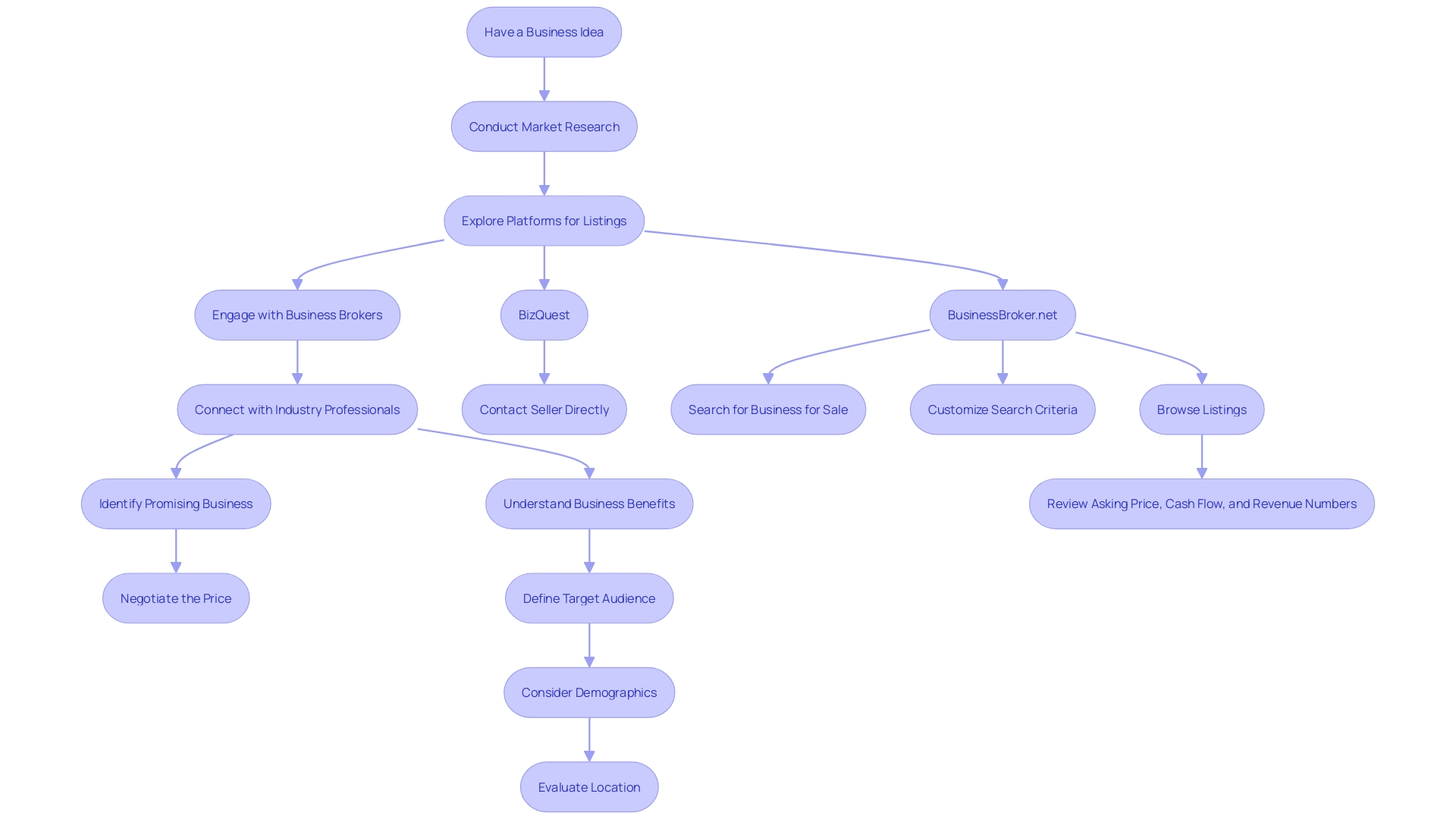
Step 4: Evaluate the Business
Once you've pinpointed establishments to visit it's important to thoroughly assess each one individually. Begin by examining their records to get a sense of how well they're doing financially and overall. Examine feedback from patrons to understand the reputation of the bar and assess how pleased they are. Evaluate their operations to ensure they run smoothly during busy periods and maintain efficiency.
The success of the bar heavily depends on its location; therefore it's important to assess the surrounding area to see if it draws a crowd of customers consistently. Make sure to review the staff members to confirm they possess the right skills and motivation needed to provide exceptional support. Examine the condition of the equipment as utilizing poorly maintained items could lead to increased operational costs and adversely affect quality.
Examining the details is crucial when assessing a venue's capacity for growth and financial achievement. Consider it this way – a bar that consistently provides excellent service and has a well-thought-out operational routine is likely to retain patrons and cultivate a devoted following. Reputable experts in the industry emphasize the importance of organizational skills and a strong understanding of financial management concepts, in enhancing sales and revenue increase. By analyzing these elements you can confidently evaluate the establishment's potential success and future prospects.
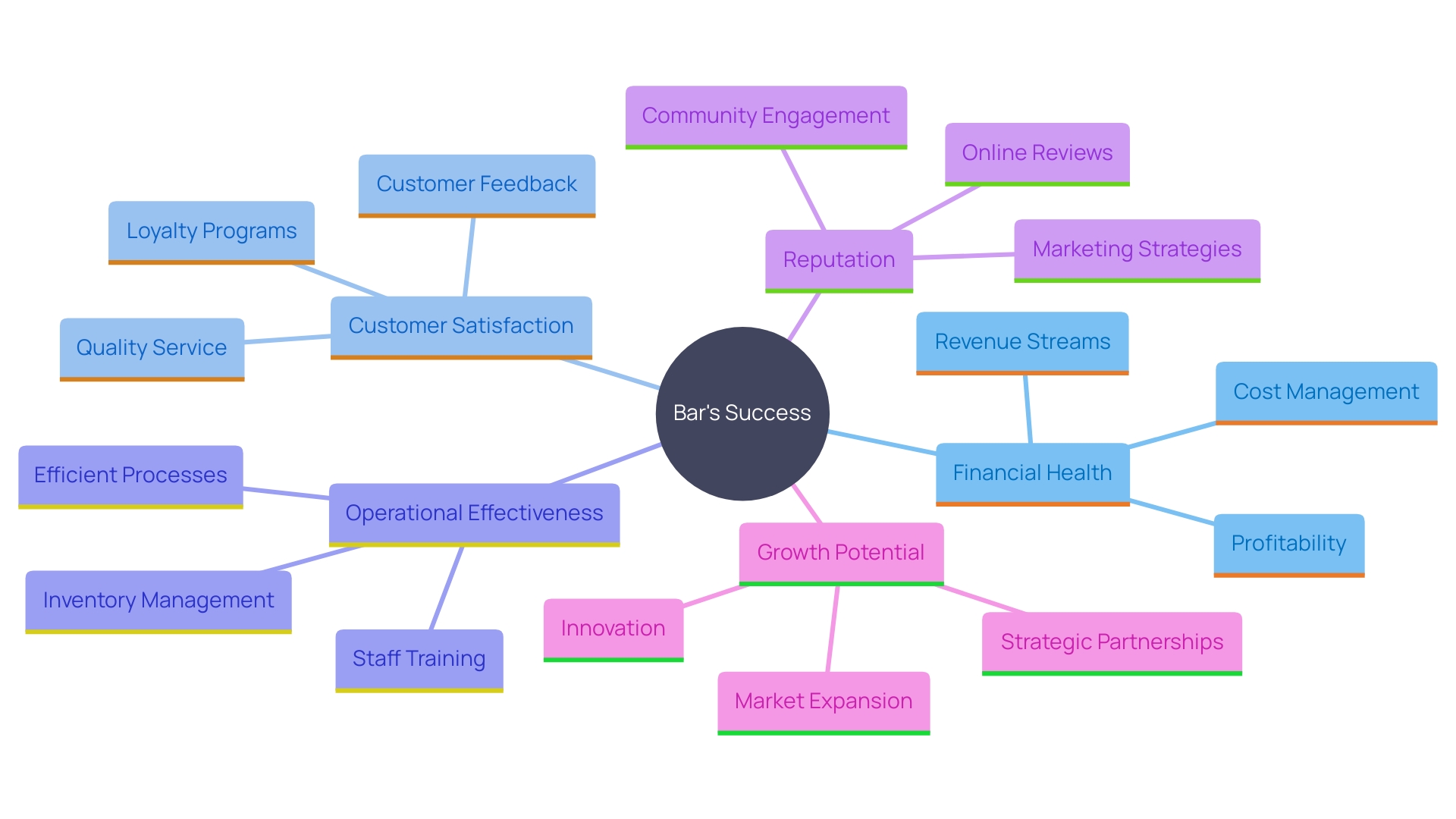
Understanding the Costs of Buying a Bar
Purchasing a bar requires consideration beyond the cost alone; it's essential to factor in additional expenses such as licensing fees and renovations along, with stocking inventory and covering initial operational costs too! Licensing fees can be quite significant depending on regulations while renovations could vary from simple enhancements to major revamps needed to meet safety and visual requirements.
Possessing a variety of stock is a significant cost element as it can enhance client contentment early in the venture at your bar establishment. Moreover you need to think about the expenses like marketing costs, insurance fees and legal and financial advisory charges. For instance, employing a lawyer to review contracts and a financial consultant for strategy development incurs a cost. Its crucial, for managing the challenges that come with owning a bar.
It is essential to consider costs such as rent and utilities along with paying staff wages to ensure smooth daily operations, for your business setup and size influence the variability of these expenses track employee performance and optimize scheduling to control costs efficiently while enhancing service experience.
Knowing and planning for these expenses can greatly influence your well being and prosperity. Setting aside funds like SBA loans or self funding approaches such, as using savings or reinvesting earnings can offer the required financial support. Having an understanding of these monetary requirements allows you to be better equipped for the fulfilling adventure of owning a bar.
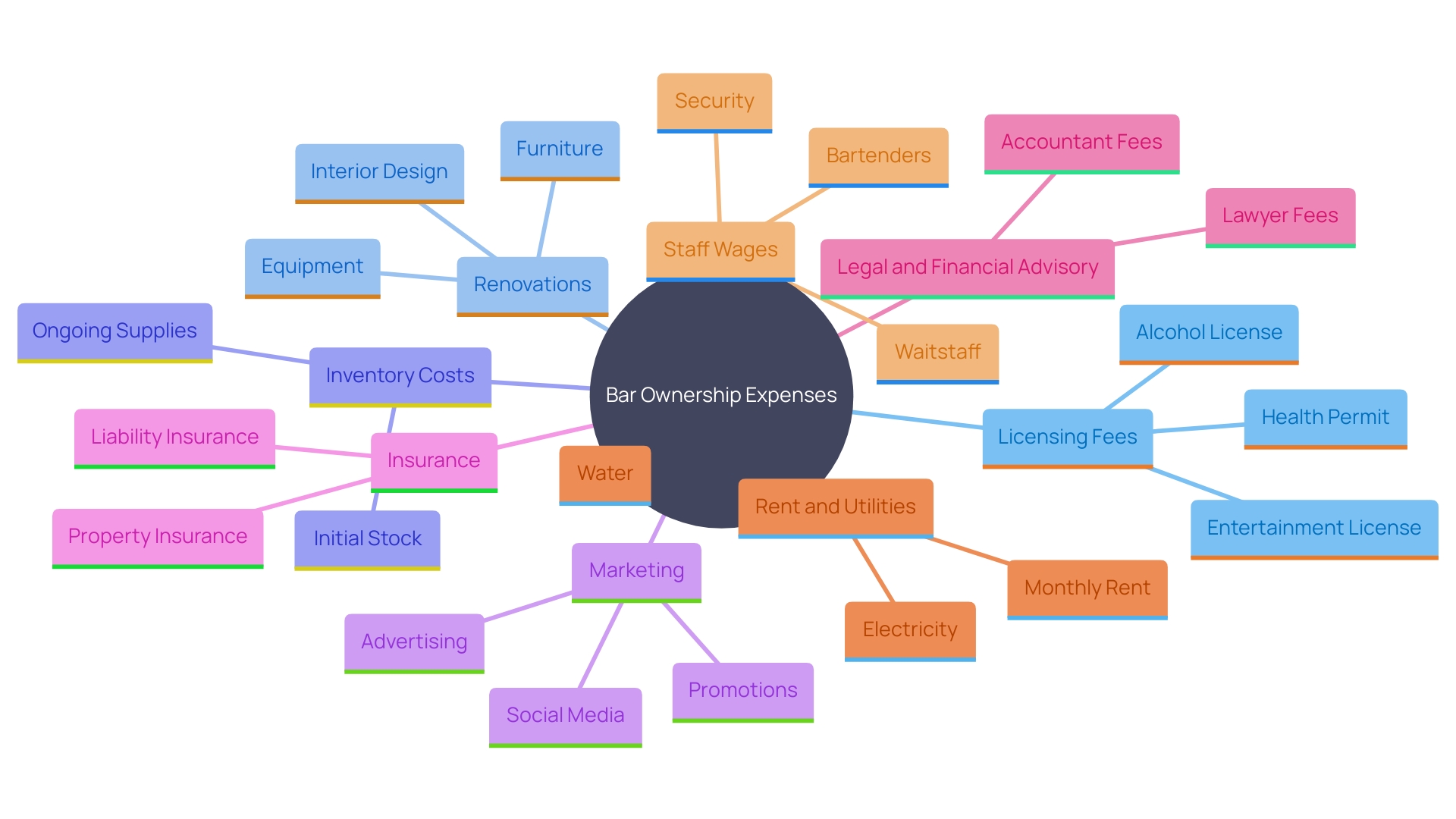
Key Considerations for Buying a Bar
When purchasing a bar establishment of your own it's important to consider the legalities involved such as zoning laws and health regulations in order to steer clear of any possible challenges ahead. Engaging in negotiations to establish agreements that protect your investment is key for a transition into ownership. Developing connections with legal and financial experts can prove extremely helpful in navigating through this process. They can provide assistance in creating buy sell contracts that detail the terms for acquiring a partners stake and the procedures, for modifying the partnership arrangement. Securing insurance for situations like the loss of a partner and covering liability and property damage can safeguard your investment from unexpected risks. Heeding advice from a lawyer at an early stage ensures compliance, with all legal and regulatory obligations to prevent any conflicts and financial issues later.
Choosing the Right Location
Selecting the location for your bar is essential for its success. Consider areas with high foot traffic and excellent visibility and accessibility. Research the population characteristics to ensure your target audience is nearby and examine the competition in the area. For instance, in Boston, an upscale lounge and cocktail bar opening near the waterfront emphasizes the importance of choosing a lively neighborhood to attract a steady stream of visitors. Selecting a location doesn't just attract customers; it also plays a key role in shaping your establishments reputation positively. As an industry pro suggests; "Make the most of the chance to display your bars vibe and provide unforgettable moments while nurturing a feeling of unity among guests." By choosing the spot wisely for your bar can transform it into a treasured hotspot, in the local nightlife scene and guarantee enduring prosperity.
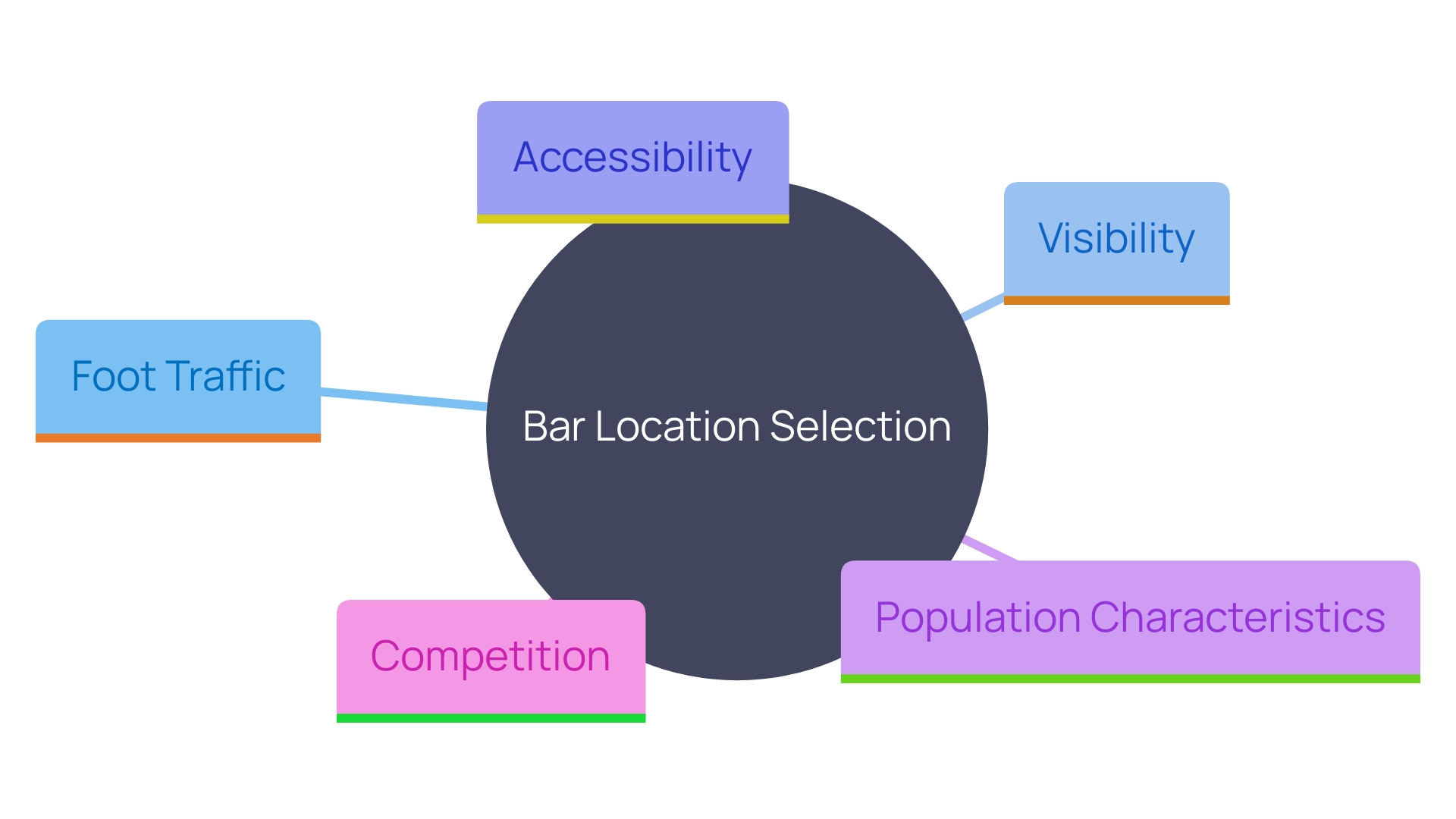
Finalizing the Purchase Agreement
After you've picked a bar and sorted out the terms with them carefully; it's essential to get the purchase agreement down to the last detail – covering everything from asset divisions and prices to any backup plans needed for a seamless transition and safeguarded interests. It's more than signing papers; it's about setting up a smooth transition and looking out for your own interests in the process of finalizing this deal. Obtaining guidance from a transaction attorney can prove incredibly helpful in navigating through this intricate process effectively. 'According to a specialist's perspective; "The process of selling an enterprise often requires a duration longer than expected by the individuals involved due to various post-negotiation and agreement signing steps."' These entail conducting diligence where the purchaser scrutinizes the companys documents and validates all assertions made. The objective is to establish a partnership that instills confidence and assurance in both parties for the future ahead. For example; Progress during this stage can lay a foundation for enduring positive business associations which are vital, for the bars ongoing operations.

Additional Tips for Success
Upon taking ownership of your bar establishment and stepping into the realm of success lies in cultivating an welcoming ambiance while also establishing a dedicated clientele base that keeps coming back for more over time by drawing inspiration from thriving community centered enterprises such as Tech Ladies. Where the focus is on creating a feeling of inclusion that goes beyond the individual characteristics of its originator. Thus fostering an environment that invites return visits and enduring loyalty.
To better connect with the community. Attract new clients while also delivering unforgettable experiences that encourage them to return repeatedly; think about organizing different activities such as themed evenings or trivia competitions, along with live music shows, as proposed by B. Joseph Pine II and James H. Gilmore in their article for the Harvard Business Review, where they highlight the significance of utilizing services as a platform and products as instruments to engage individuals in a meaningful way and create enduring memories.
Utilize the influence of media to connect with a wider range of people and update your patrons about future happenings, discount offers and daily deals. Engaging content and consistent participation on sites like Instagram and Facebook can significantly improve the visibility of your bar and interaction with patrons.
Staying adaptable in the changing hospitality industry is crucial for success. Seek input from clients frequently to understand their preferences and pinpoint areas for improvement. According to research from Antavo, loyalty programs can have a significant impact; businesses that implement such initiatives are anticipated to see a considerable increase in client loyalty and spending.
Creating an environment is important in addition to running operations smoothly and efficiently is essential in any workplace setting such as a bar managers role which experts believe plays a crucial part, in upholding top notch service standards and managing finances and customer happiness by giving staff the tools they need to excel and grow through clear targets and valuable feedback.
By implementing these tactics in your bar management approach ensures the establishment not only draws in patrons but also cultivates a dedicated following leading to sustained prosperity, in the long run.
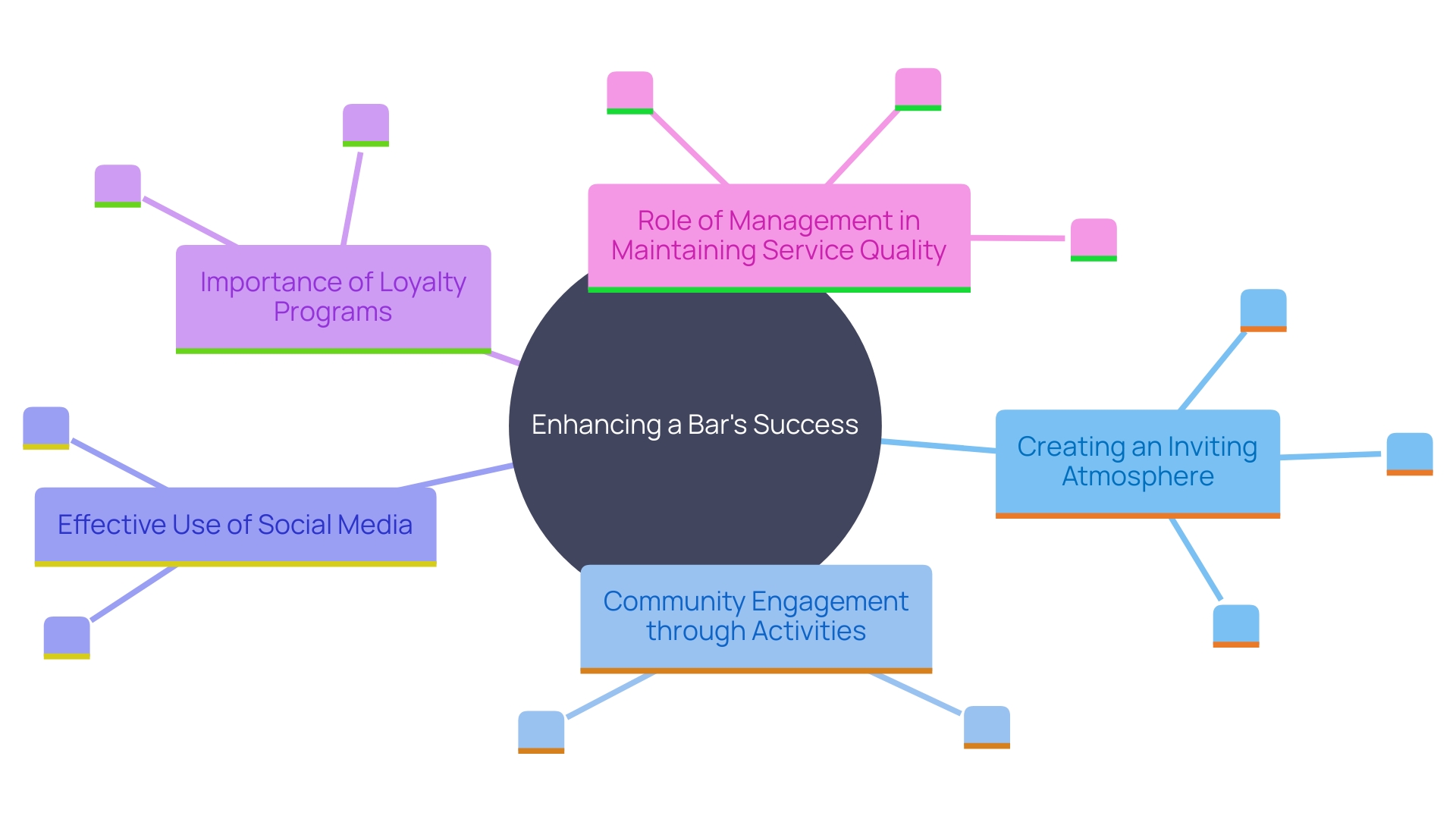
Conclusion
Running a bar calls for a multi pronged strategy that kicks off with a clearly outlined concept and thorough market research. To stand out in a field of competitors and connect with the right crowd aspiring bar proprietors need to pinpoint the distinctive ambiance and target demographic. It's essential to grasp the population trends and customer likes to customize offerings and keep up with the latest industry developments to boost overall customer happiness.
Embarking on the path from idea to owning a business entails assessing possible venues by examining their financial well being and customer satisfaction levels as well as operational effectiveness.The importance of location is crucial since it influences both the number of visitors and the reputation of the brand.Additionally carefully maneuvering through the legal demands and financial responsibilities guarantees a seamless transition into ownership while protecting investments, from unexpected hurdles.
After obtaining the bar establishment the attention turns towards establishing a welcoming atmosphere that encourages customer loyalty. Interacting with the community by organizing events and utilizing social media for marketing can draw in a varied customer base. Consistent enhancements based on customer input and adaptable management strategies will not just elevate the quality of service. Also play a role, in achieving lasting prosperity.
By following these guidelines and values faithfully pub proprietors can turn their dream into a venue that shines in the lively hospitality sector.




